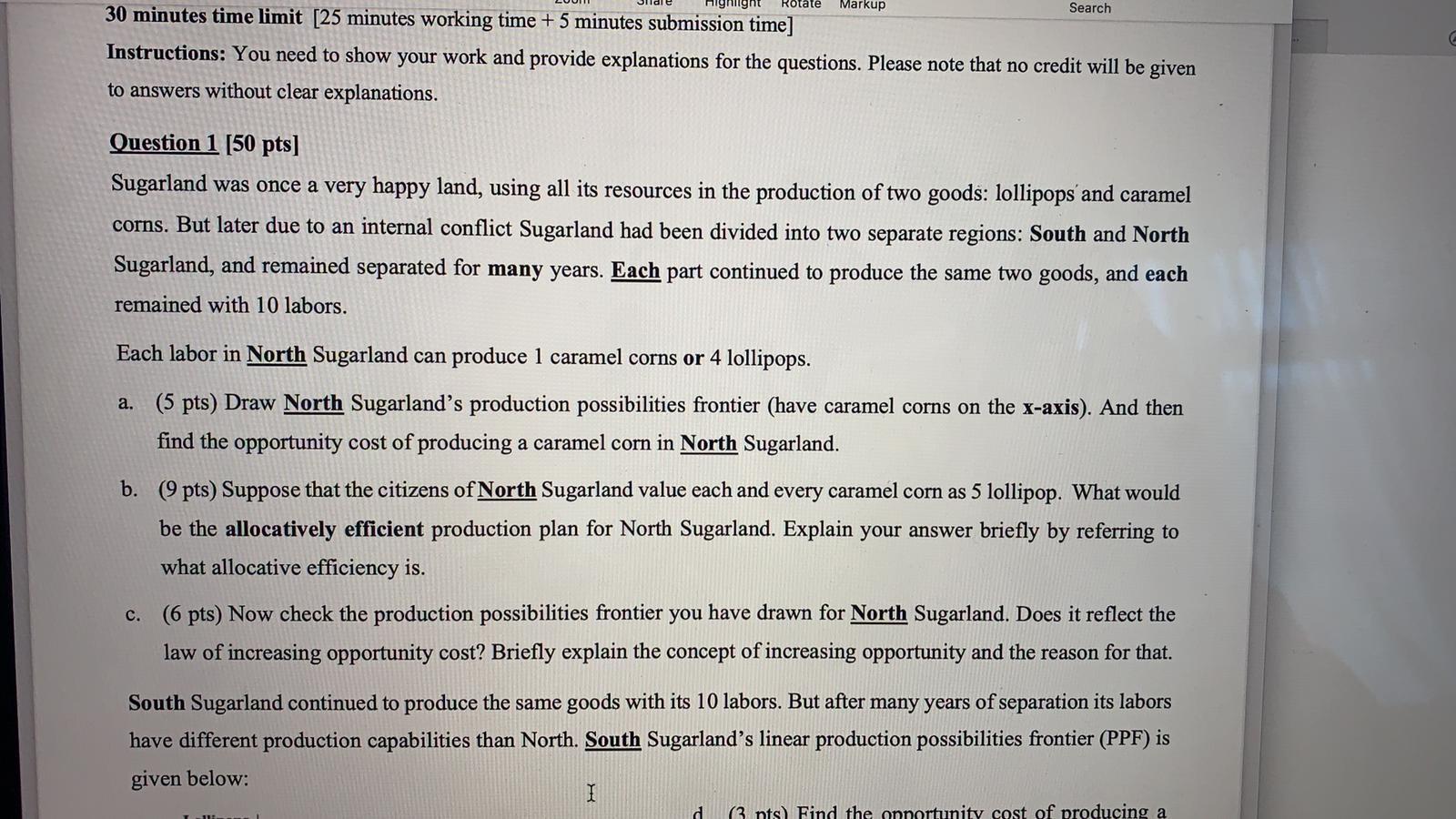 e
e
Rotate Markup Search 30 minutes time limit [25 minutes working time + 5 minutes submission time) Instructions: You need to show your work and provide explanations for the questions. Please note that no credit will be given to answers without clear explanations. Question 1 (50 pts] Sugarland was once a very happy land, using all its resources in the production of two goods: lollipops and caramel corns. But later due to an internal conflict Sugarland had been divided into two separate regions: South and North Sugarland, and remained separated for many years. Each part continued to produce the same two goods, and each remained with 10 labors. Each labor in North Sugarland can produce 1 caramel corns or 4 lollipops. a. (5 pts) Draw North Sugarland's production possibilities frontier (have caramel corns on the x-axis). And then find the opportunity cost of producing a caramel corn in North Sugarland. b. (9 pts) Suppose that the citizens of North Sugarland value each and every caramel corn as 5 lollipop. What would be the allocatively efficient production plan for North Sugarland. Explain your answer briefly by referring to what allocative efficiency is. c. (6 pts) Now check the production possibilities frontier you have drawn for North Sugarland. Does it reflect the law of increasing opportunity cost? Briefly explain the concept of increasing opportunity and the reason for that. South Sugarland continued to produce the same goods with its 10 labors. But after many years of separation its labors have different production capabilities than North. South Sugarland's linear production possibilities frontier (PPF) is given below: I (3 pts) Find the opportunity cost of producing a d Rotate Markup Search 30 minutes time limit [25 minutes working time + 5 minutes submission time) Instructions: You need to show your work and provide explanations for the questions. Please note that no credit will be given to answers without clear explanations. Question 1 (50 pts] Sugarland was once a very happy land, using all its resources in the production of two goods: lollipops and caramel corns. But later due to an internal conflict Sugarland had been divided into two separate regions: South and North Sugarland, and remained separated for many years. Each part continued to produce the same two goods, and each remained with 10 labors. Each labor in North Sugarland can produce 1 caramel corns or 4 lollipops. a. (5 pts) Draw North Sugarland's production possibilities frontier (have caramel corns on the x-axis). And then find the opportunity cost of producing a caramel corn in North Sugarland. b. (9 pts) Suppose that the citizens of North Sugarland value each and every caramel corn as 5 lollipop. What would be the allocatively efficient production plan for North Sugarland. Explain your answer briefly by referring to what allocative efficiency is. c. (6 pts) Now check the production possibilities frontier you have drawn for North Sugarland. Does it reflect the law of increasing opportunity cost? Briefly explain the concept of increasing opportunity and the reason for that. South Sugarland continued to produce the same goods with its 10 labors. But after many years of separation its labors have different production capabilities than North. South Sugarland's linear production possibilities frontier (PPF) is given below: I (3 pts) Find the opportunity cost of producing a d
 e
e





